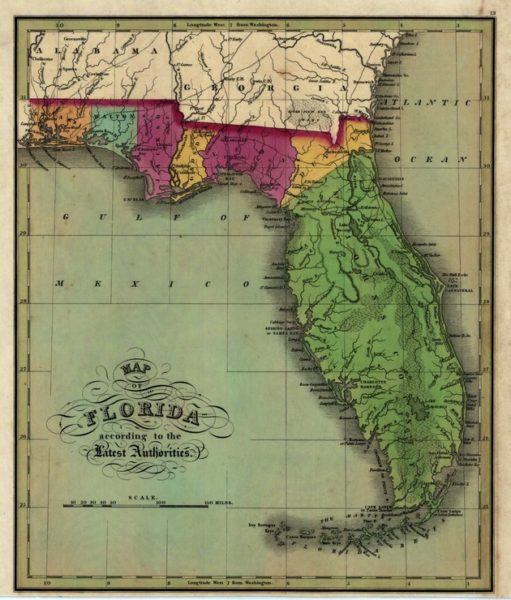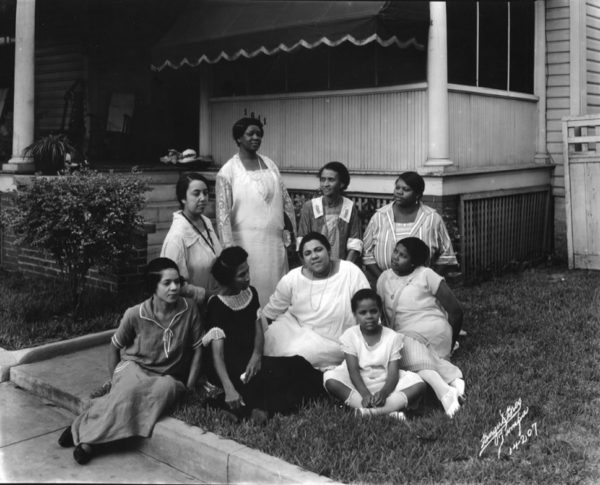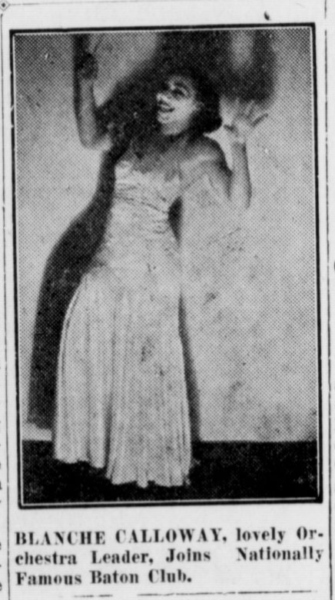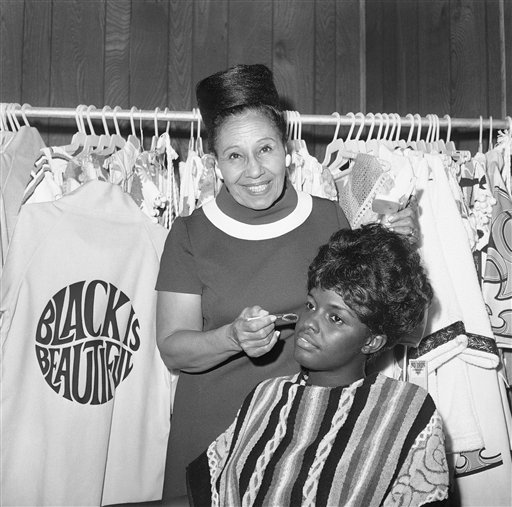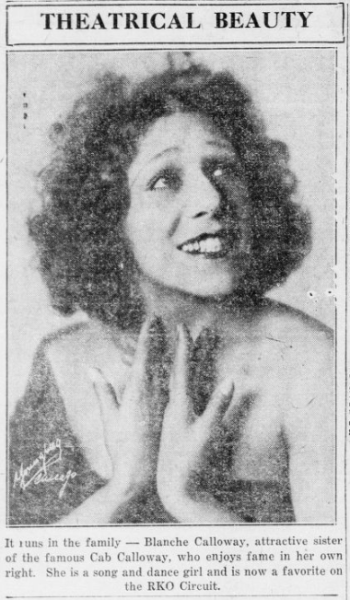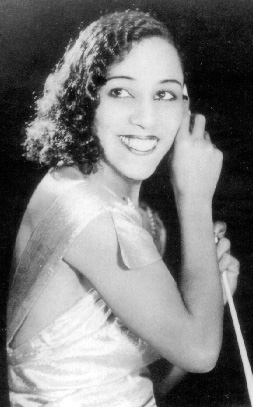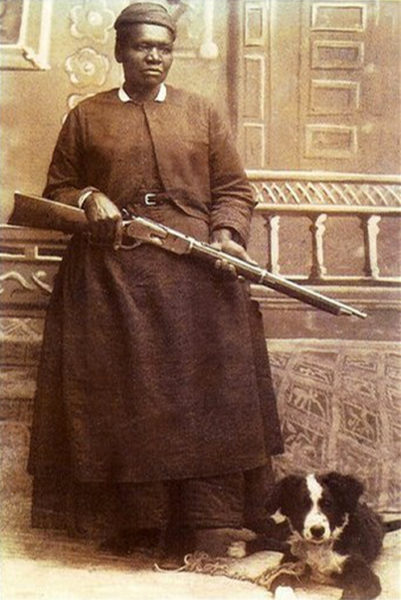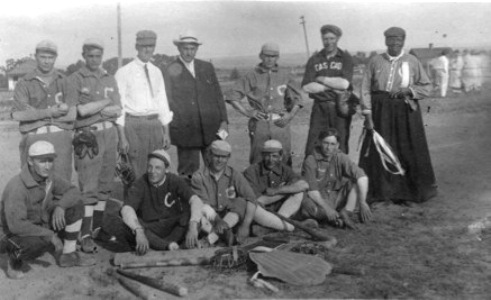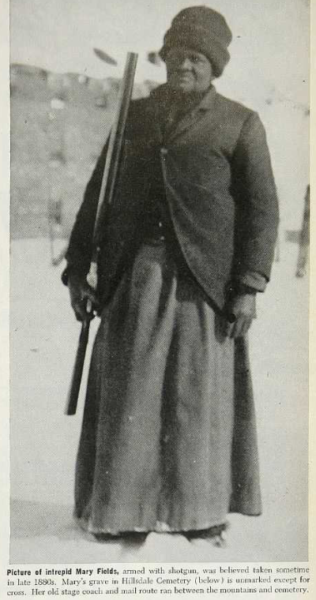LaVern Baker has the strange distinction of being a wildly successful performing artist, the second African American woman to be inducted into the Rock and Roll Hall of Fame as a solo artist, one of the first eight recipients of the Pioneer Award from the Rhythm and Blues Foundation, and, at the same time, unknown to far too many people. Even her Wikipedia entry calls attention to its unfinished state and includes many inaccuracies. I’ve tried to cobble together the story of her life with the most reliable information I could find.
Born Delores Evans in Chicago, she was the niece of Merline Johnson, who sometimes may have gone by Merline Baker in the clubs where she sang with the Big Bill Broonzy and Blind John Davis as the Ya Yas Girl. Many sources commonly point to another aunt: Memphis Minnie, and give her the name Merline Baker, but of all the aliases that Memphis Minnie went by, Merline was not one of them. It is possible that one errant source long ago decided LaVern Baker’s aunt was Memphis Minnie and simply ran with it, molding information about Merline Johnson to fit the fantasy.
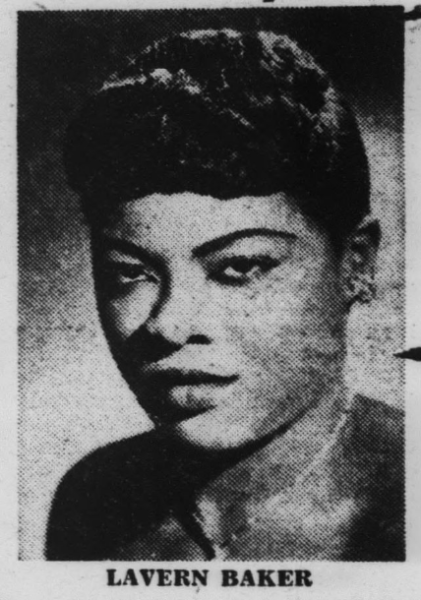
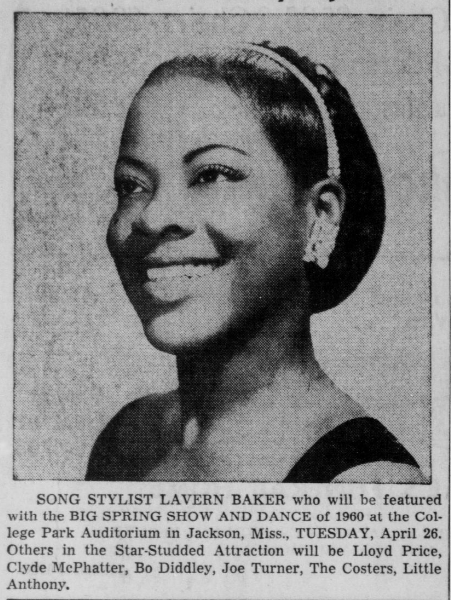
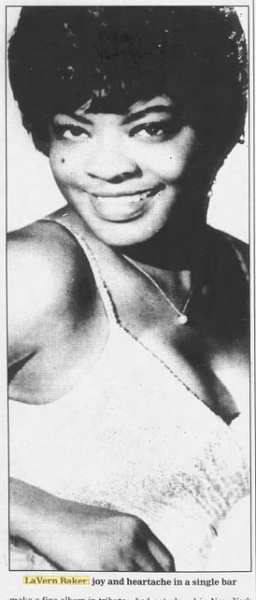
As Delores Evans she sang gospel while growing up, until, at the age of 17, she established her first entertainment persona performing at the club DeLisa under the name Little Miss Sharecropper. As Little Miss Sharecropper, she took inspiration from a contemporary, Little Miss Cornshucks, dressing herself in a tattered cotton sack to evoke the antebellum south for the southerners that were flooding into the Chicago area. During this time she also went by Bea Baker, perhaps imitating her aunt who was said to go by Baker as a back-stage alternative to her on-stage name the Ya Yas Girl.
At nineteen, she married Eugene Williams, a postal worker in Cook County. Some time just afterwards she got a gig at the Flame Bar and recorded with the Eddie Penigar Band. Then, in 1952, she adopted LaVern Baker as the name she would use for the rest of her career after joining the Todd Rhodes Orchestra and before touring Europe. Upon her return, she was signed to Atlantic Records in 1954 as their second female artist after Ruth Brown. A year later she would have her first, and one of the biggest, hits of her career: “Tweedle-Dee.”
Directly after her release of ‘Tweedle-Dee’ it was covered by Georgia Gibbs, who, like several white cover artists at the time, were taking advantage of radio’s aversion to playing ‘black’ music by making copies that would high-jack the sales of the original records. A newspaper article from 1958 gives one rendition of the story where LaVern Baker called up her Congressman, Charles Diggs, to complain about how copyright law had to be changed to rectify the situation. As excited as I was by the idea that LaVern Baker instigated a change to copyright law, I could find no mention of amendments to the law being proposed by Charles Diggs and/or made concerning music in the mid1950s.
In 1955 Baker appeared on the Ed Sullivan show, performing ‘Tweedle-Dee’ in a line up of R&B musicians arranged by DJ Dr. Jive. Her subsequent hits, including ‘Jim Dandy,’ and ‘I Cried a Tear’ endeared her to early Rock and Roll fans. She would become known as one of the first queens of the Rock and roll era.
After a tour of Australia in 1957, her marriage to Eugene Williams was ending. They were divorced by 1958 and in 1959, or 1961, she married comedian Slappy White. Some reports say that her fame was fading by the time she left Atlantic Records in 1964 and signed up to go on a USO tour in 1966. While on tour, she fell ill with pneumonia performing in Vietnam. Her recovery was long, first in Thailand and then in the Philippines. By the time she felt healthy again, in 1967, the USO tour had gone on without her and she was stranded on the Naval Base Subic Bay with no way to get home.
Slappy White, perhaps assuming the worst, both made moves to divorce Baker and to have her declared dead. He assumed all rights to her recordings.
“I decided to quit tearing myself up and accept the fact that I wasn’t going home anytime soon. I wasn’t even sure I wanted to go, seeing as my own husband just up and declared I was dead so he could make some money off my records. He never even tried to find out about where I was or if I was alive. Who wants to go back to that?”
-LaVern Baker quoted in Bob Gulla’s Icons of R&B and Soul
LaVern Baker stayed in the Philippines from 1967-1988, performing at the NCO club at Subic Bay. While in the Philippines she had two daughters, and adopted another. Upon returning to the states she jumped determinedly back to work, performing at the 1998 Atlantic Records 40th anniversary celebration at Madison Square Gardens, and obtaining a lead role on Broadway in 1990. By the time she was interviewed by the Los Angeles Times in 1995, her health had begun to infringe on her work. A few strokes and a late diagnosis of diabetes had resulted in the loss of some memory and both her legs. Baker refused to be stopped, and continued performing until she died in 1997 at the age of 67.
Lost History
Some of the most illuminating quotation and additional details about LaVern Baker’s life, especially her years in the Philippines, comes from a 2007 first hand account by D. Armenta, a navy air traffic controller who filled in a shift at the Armed Forces Radio/Television station in Subic Bay twenty years earlier when LaVern Baker came by to tell her story. Unfortunately, only the first page was archived by the Internet Archive’s Way Back Machine (in the reference list below), and, other than the quotations made in Gulla’s book and other works, is currently lost to time like much of LaVern Baker’s story.
Works Referenced
- Armenta, D. (2007) My Brush with Greatness: The Amazing and True Story of 50s Diva LaVern Baker. originally: www.associatedcontent.com/article/156936/a_true_story_in_honor_of_black_american.html . retrieved 4/7/2022: http://web.archive.org/web/20071017044337/www.associatedcontent.com/article/156936/a_true_story_in_honor_of_black_american.html
- Bakers Protest Stopped Thefts. Jackson advocate. [volume] (Jackson, Miss.), 07 June 1958. Chronicling America: Historic American Newspapers. Lib. of Congress. <https://chroniclingamerica.loc.gov/lccn/sn79000083/1958-06-07/ed-1/seq-5/>
- Dunbar, T. (2018) “Lavern Baker (1929-1997)” Black Past. https://www.blackpast.org/african-american-history/baker-lavern-1929-1997/
- Gardner, Elysa (1995) Hall of Famer Returns to the Spotlight : Pop Beat: After a roller-coaster career and losing both legs to diabetes, singer LaVern Baker prepares for a Cinegrill gig and plans a life beyond concerts. Los Angeles Times. https://www.latimes.com/archives/la-xpm-1995-08-26-ca-38992-story.html
- Gulla, Bob (2008) Icons of R&B and Soul: An Encyclopedia of the Artists Who Revolutionized Rhythm. vol.1
- “LaVern Baker” (2022) Wikipedia. https://en.wikipedia.org/wiki/LaVern_Baker
- “LaVern Baker” (1997) The Daily Telegraph. 13 Mar 1997, Thu. pg29
- Lavern’s ‘Jim Dandy.’ Evening star. [volume] (Washington, D.C.), 03 Feb. 1957. Chronicling America: Historic American Newspapers. Lib. of Congress. <https://chroniclingamerica.loc.gov/lccn/sn83045462/1957-02-03/ed-1/seq-101/>

